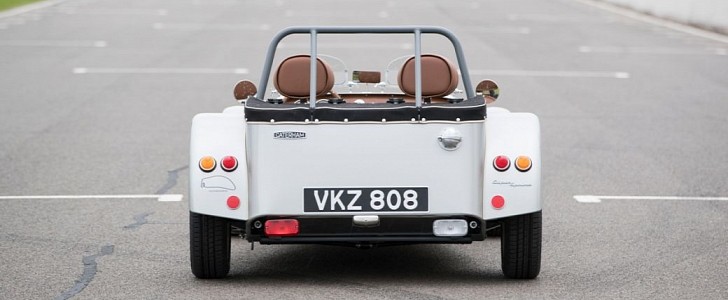More horsepower and torque seem to be the only metrics that matter these days in the world of performance cars, but automakers cater to what customers want. In truth, horsepower and torque on their own don’t necessarily translate to driving enjoyment or quick acceleration.
Take, for instance, the Shelby GT500. It’s the most potent Mustang entitled to wear a license plate and the most potent Ford Motor Company production car of all time, yet it’s let down by the size of the rear tires (315/30 by 20 inches) when trying to launch the damn thing. Meanwhile, the Bugatti Chiron is hugely impressive in a straight line and a bit lumbersome in the corners because it weighs just around 2,000 kilograms (4,410 pounds).
According to the Colin Chapman school of thought, simplicity and lightness are the secrets to a great-performing and entertaining machine. The Lotus 7 distills both traits better than pretty much anything else, and as fate would have it, the corner carver’s recipe will change from 2023 with extra weight.
Speaking to British publication Autocar, chief executive officer Graham Macdonald confessed that Caterham needs to go electric to survive. The Seven EV will be developed with a focus on the power-to-weight ratio, but nevertheless, lithium-ion battery cells tend to weigh a lot.
Other details that may alienate Seven loyalists come in the guise of chassis design, suspension geometry, and regenerative braking. Macdonald confirmed that we’re dealing with a “bigger, heavier, and nicer to sit in” car. On the upside, the Seven EV promises to match the Seven 620R in terms of acceleration: 2.79 seconds to 60 miles per hour (96 kilometers per hour).
Macdonald has driven an electric prototype of the upcoming model, and he assures prospective customers that it feels like a go-kart. “Exciting in a different way [from the internal combustion-engined Caterham Seven]” is how the head honcho describes the yet-to-be-revealed sports car.
Oh, and by the way, the British automaker is committed to keeping the combustion engine alive for as long as possible. Considering that new ICEs will become a thing of the past in the United Kingdom in 2030, you have nine years at most to buy a gasoline-powered, brand-new Caterham Seven.
According to the Colin Chapman school of thought, simplicity and lightness are the secrets to a great-performing and entertaining machine. The Lotus 7 distills both traits better than pretty much anything else, and as fate would have it, the corner carver’s recipe will change from 2023 with extra weight.
Speaking to British publication Autocar, chief executive officer Graham Macdonald confessed that Caterham needs to go electric to survive. The Seven EV will be developed with a focus on the power-to-weight ratio, but nevertheless, lithium-ion battery cells tend to weigh a lot.
Other details that may alienate Seven loyalists come in the guise of chassis design, suspension geometry, and regenerative braking. Macdonald confirmed that we’re dealing with a “bigger, heavier, and nicer to sit in” car. On the upside, the Seven EV promises to match the Seven 620R in terms of acceleration: 2.79 seconds to 60 miles per hour (96 kilometers per hour).
Macdonald has driven an electric prototype of the upcoming model, and he assures prospective customers that it feels like a go-kart. “Exciting in a different way [from the internal combustion-engined Caterham Seven]” is how the head honcho describes the yet-to-be-revealed sports car.
Oh, and by the way, the British automaker is committed to keeping the combustion engine alive for as long as possible. Considering that new ICEs will become a thing of the past in the United Kingdom in 2030, you have nine years at most to buy a gasoline-powered, brand-new Caterham Seven.





















